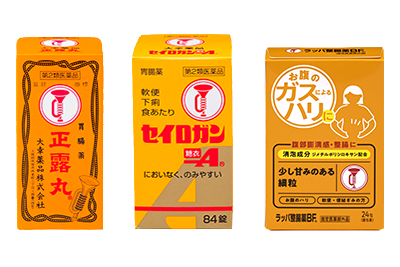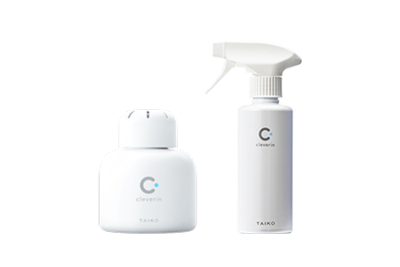Truth of Seirogan
Misconceptions about creosote
Creosote is effective against gastrointestinal disorders and is the major ingredient of Seirogan. However, people often have misconceptions about creosote. The following highlights the latest research findings on creosote that can ease the common misconceptions.
| Creosote has two varieties: medical creosote and preservative creosote. | Will it kill the bacteria inside our stomach? | Is it effective against any kind of diarrhea? |
Creosote has two varieties: medical creosote and preservative creosote.
Creosote has 2 categories: wood creosote and coal tar creosote, and although completely different they are often mistaken as the same thing.
This misconception leads one to think that Seirogan is dangerous and contains carcinogens.
Medical creosote

As the major ingredient of Seirogan, JP wood creosote is a light yellow transparent liquid obtained by repeated distillation of wood tar through carbonization of wood, such as beech and pine.
This type of creosote can be used for medical purposes, and thus becomes the major ingredient of Seirogan and Seirogan Toi-A. It was registered as “coal tar creosote” in the Japanese Pharmacopoeia (a record of pharmaceutical specifications in Japan), and was later changed to “wood creosote.”
It is a natural herb containing phenol compounds, such as guaiacol, creosol, and phenol.
Coal tar creosote as preservative

Coal tar creosote is a byproduct of the destructive distillation of coal. It is a dark brown liquid after distillation.
Coal tar creosote can be used as the raw material for carbon black and as a preservative for crossties and posts. Therefore, it is also called industrial creosote or coal tar creosote under the regulations of the JIS.
As some coal tar creosotes contain benzopyrene, a carcinogen, their uses are restricted.
Both types of creosotes are often confused in magazines and books, and also by professionals (e.g. physicians and pharmacists), who sometimes misconceive the two creosotes to be the same. Incorrect descriptions of the two creosotes were also found in the NTP and EPA, though they have been corrected and updated.
Misconceptions about the phenol content in the creosote
Seirogan and Seirogan Toi-A were once considered hazardous because of their phenol content.
Concentrated phenol can alter proteins and is corrosive. Contact with the skin and eyes can result in functional disabilities. However, phenol exists in our environment, such as the fumes from lighting a cigarette, smoked fish, and drinks. Phenol is proven to be present in the blood of healthy individuals, and more importantly, official reports indicate that phenol taken orally is not carcinogenic. These reports also mention that when compared with the toxic contents found in phenol, the phenol content in Seirogan is very low.




